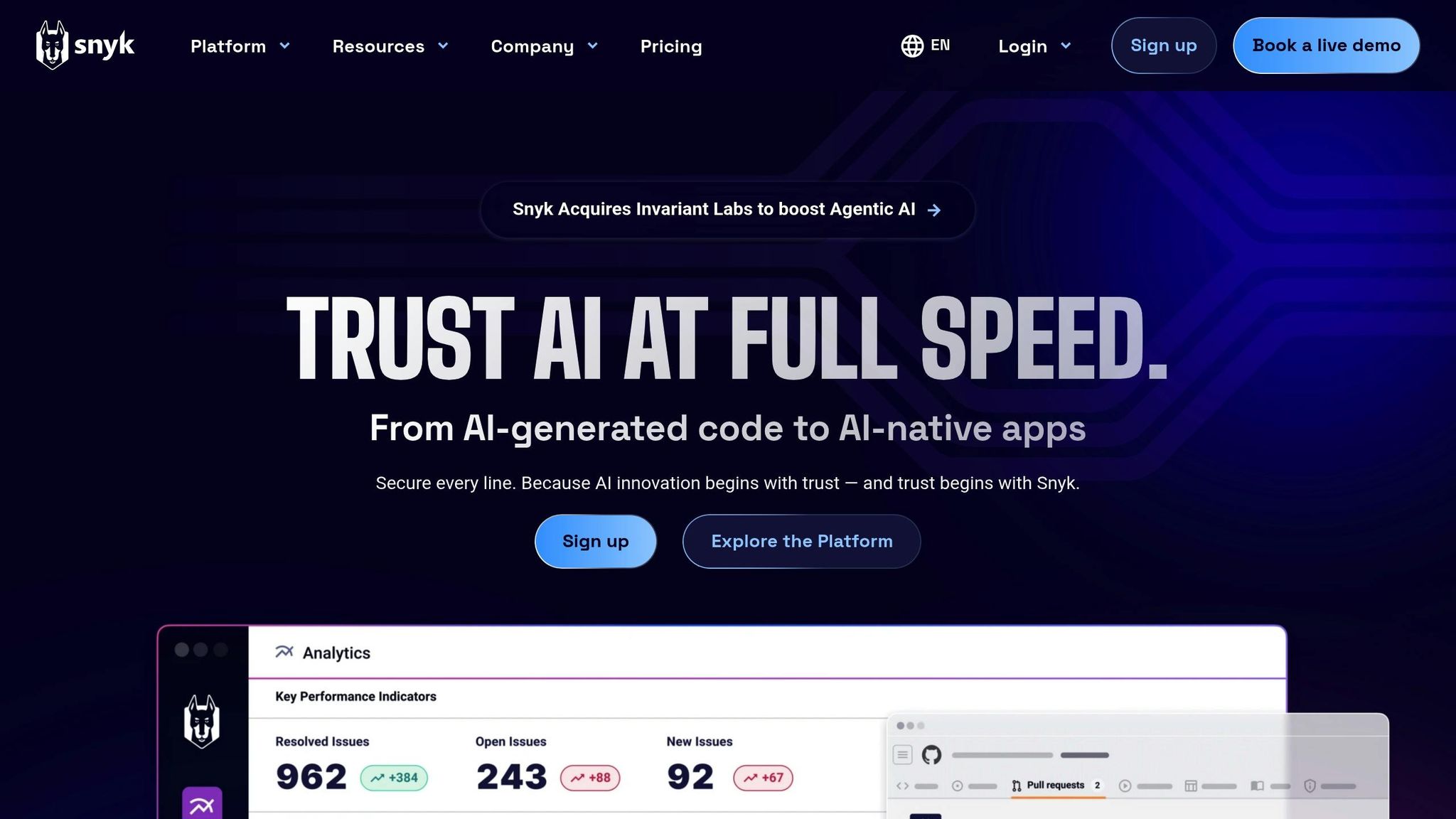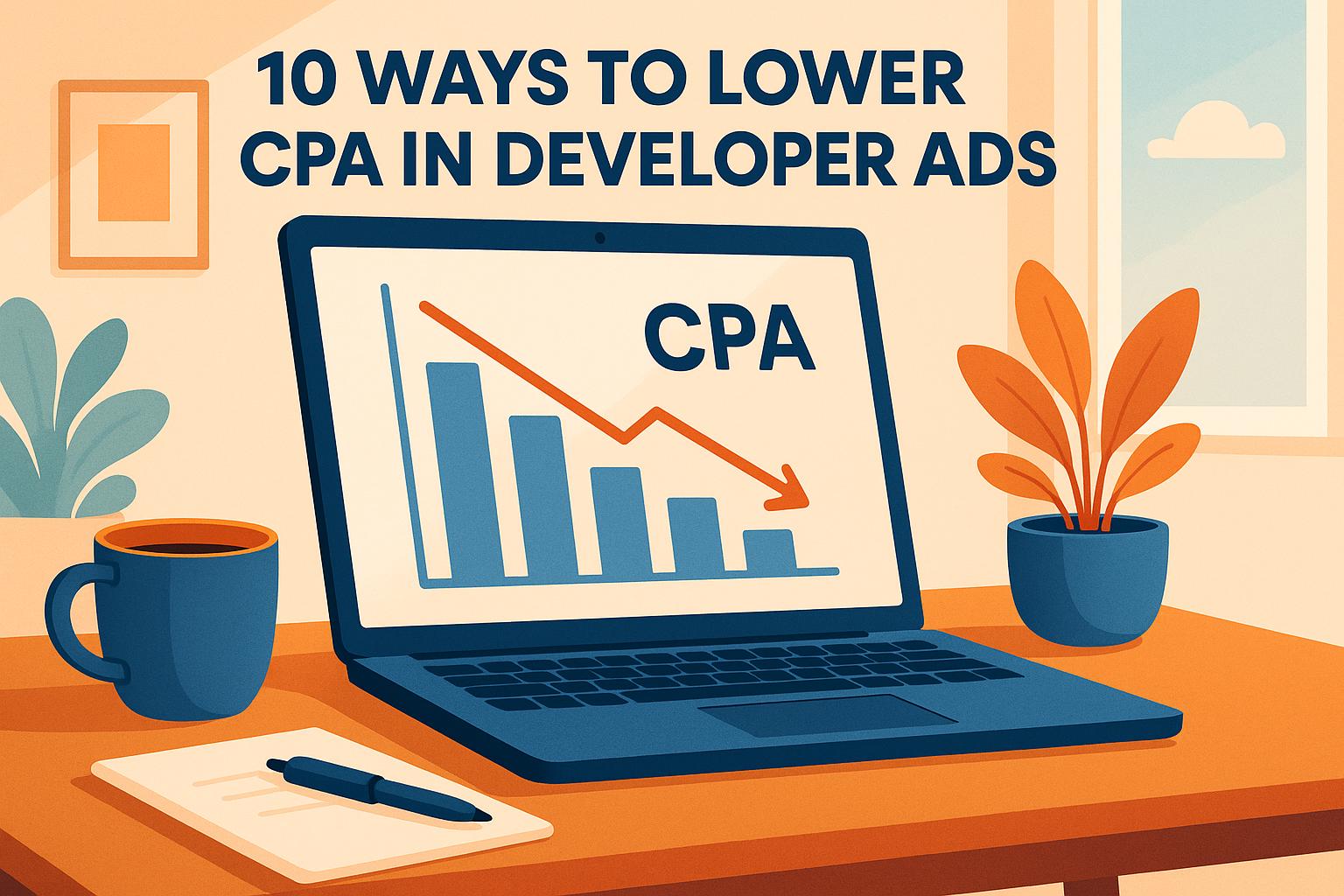


Explore how post-activation strategies transform developers into advocates, driving sustainable growth through community engagement and feedback.
The key to sustainable growth for developer-focused products lies in what happens after activation. Here's why: once developers experience your product's value, they become more than just users - they turn into contributors, advocates, and growth drivers. Growth loops, unlike linear funnels, create a cycle where engaged users bring in new ones, amplifying your reach.
Key insights:
- Activation is when developers first see your product’s value. Without this, they may never return.
- Post-activation behaviors - like sharing feedback, participating in communities, and building tools - fuel organic growth.
- Retention, community engagement, and advocacy are critical to keeping the loop going.
- Developer feedback improves your product, creating a cycle of better features that attract and retain users.
Actionable strategies:
- Retention: Consistently deliver value through personalized updates, resources, and communication.
- Community participation: Encourage knowledge sharing and host events to keep developers engaged.
- Advocacy: Make it easy for developers to share your product with peers through referrals and recognition.
- Feedback-driven development: Act on user input to strengthen the product and build trust.
Using platforms like daily.dev Ads, you can target developers effectively, ensuring your growth strategies reach the right audience. Focus on building a cycle that turns users into advocates, sustaining growth long-term.
How Snyk built a product-led growth juggernaut | Ben Williams (VP of Product at Snyk)

Core Strategies for Post-Activation Growth Loops
Transforming activated users into growth drivers is all about creating a self-sustaining cycle. These strategies focus on keeping developers engaged, building a strong community, and turning them into advocates - all while continuously improving your product based on their feedback.
Retention-Focused Engagement
Keeping users engaged after activation is critical. It’s not just about retaining them - it’s about showing consistent value. For context, tech companies lose between 13.2% and 18.3% of their top IT talent annually, and replacing a single software engineer can cost 30–70% of their annual salary. That’s a lot of time and money at stake.
A strong connection is the foundation of retention. Sharon Koifman sums it up perfectly:
"I often say that company culture means connection; the connection is the culture."
Personalized communication is key here. Whether it’s targeted updates about features that match their needs, sharing relevant technical guides, or simply acknowledging their contributions, these efforts show developers they’re valued.
Empathy in management also plays a huge role. Research shows that empathetic, tech-savvy managers can reduce churn by 25% or more. And since interruptions cost developers an average of 22 minutes each time, it’s important to balance asynchronous updates with real-time touchpoints that respect their focus.
Here’s a great example: Calm, the meditation app, found that retention tripled for users who set daily reminders. By encouraging this habit during onboarding, 40% of users stuck with it, making the app a part of their daily routine. For developer tools, the same principle applies - when your product becomes part of their workflow, retention rates soar.
This kind of engagement lays the groundwork for a thriving developer community.
Building Community Participation
A vibrant developer community thrives on shared knowledge and mutual support. When developers have a space to learn from each other, they create an ecosystem that’s naturally appealing to newcomers.
At the heart of a strong community is knowledge sharing. When developers share their experiences, solutions, and creative ideas, they build a treasure trove of practical examples. This not only helps new users but also highlights the expertise within the community.
Katie Gamanji, a senior engineer at Apple, highlights the value of community:
"Anyone who's trying to understand what cloud native is… you can get your answers in the community, both the cloud-native community and the wider open source community... Technology is great, but the community around cloud native, it's what really makes it great."
Gamification can take participation to the next level. For instance, RingCentral’s Game Changers program rewards members for answering questions, sharing blog posts, contributing to open source, and more. On top of that, hosting virtual meetups, hackathons, and collaborative coding sessions keeps engagement high.
Engaged community members often become advocates, attracting new talent and boosting the visibility of your program.
Driving Advocacy Through Referrals
Developers trust recommendations from their peers more than any marketing message. Advocacy happens when developers naturally share their positive experiences, and it’s your job to make that easy.
Once developers are engaged and active in the community, they often turn into advocates. Highlighting their work across your channels can encourage them to share it further, acting as authentic social proof. Referral incentives - like early access to new features, exclusive content, or opportunities to influence the product roadmap - can resonate deeply with developers. And don’t underestimate the power of one-click sharing options within your product to amplify their reach.
Advocates don’t just bring in new users - they also help their peers get more productive with your tools.
Feedback-Driven Product Development
Advocacy naturally leads to feedback, which becomes the driving force behind product evolution. Developers want to feel their input matters, and acting on their suggestions strengthens their connection to your platform.
To gather meaningful feedback, use targeted surveys, user-testing sessions, and community forums. But collecting feedback isn’t enough - communicating how you use it is just as important. Transparency builds trust and encourages even more input.
Data-driven prioritization - using analytics tools and A/B testing - helps focus on changes that deliver the greatest impact. The results speak for themselves: integrating user insights can boost retention by up to 15%, cut failure rates by 50%, improve satisfaction by 30%, and refine features by 75%.
Using daily.dev Ads for Post-Activation Growth

Once you’ve built a solid foundation of user retention and community engagement, the next logical step is ramping up your post-activation growth efforts. This is where daily.dev Ads comes into play. It’s a platform designed to meet developers where they’re already consuming content, making it a perfect fit for sustaining growth beyond the activation phase. By weaving targeted advertising into your growth strategies, daily.dev Ads can help keep those momentum-building loops running strong.
Precision Targeting for Developers
To drive meaningful post-activation growth, you need to reach the right developers with messages tailored to their interests and needs. daily.dev Ads excels here by offering advanced targeting options that go beyond the basics. You can fine-tune your campaigns to connect with developers based on their specific interests, seniority levels, and even the technology stacks they work with.
For example, if your product is geared toward Python or JavaScript developers, you can specifically target those groups. Or, if your audience is more niche - say, developers using frameworks like React or tools like Kubernetes - the platform allows you to zero in on those segments. This precision is especially helpful when expanding your reach within existing developer communities or finding audiences that closely resemble your current users.
daily.dev Ads also offers geographic targeting, which is invaluable for promoting local events like meetups or conferences. Whether you’re focusing on a single city or a broader region, you can ensure your ads reach developers who are most likely to engage with your initiatives. With access to over 1 million developers worldwide, the platform combines scale with the precision needed to connect with prospects who align with your growth goals.
Native Ad Placements for High Engagement
Developers tend to prefer native ads over traditional formats because they integrate seamlessly into their content consumption experience. That’s why daily.dev Ads emphasizes native placements like in-feed ads, post page ads, and personalized digest ads - formats that feel natural and non-intrusive.
- In-feed ads blend into the content stream, making them ideal for promoting things like community events, technical resources, or product updates. These ads appear when developers are already engaged, increasing the chances they’ll take notice.
- Post page ads are displayed after developers consume technical content, capturing their attention at a moment when they’re most engaged. This is a great opportunity to showcase related tools, invite them to join your community, or highlight how your product complements what they’ve just learned.
- Personalized digest ads (coming soon) take targeting to the next level by delivering your message within curated content tailored to each developer’s specific interests. This level of personalization significantly boosts the likelihood of engagement, especially with developers who closely match your ideal user profile.
By sticking to these native formats, you can ensure your ads feel relevant and respectful, fostering a positive perception of your brand.
Real-Time Campaign Optimization
Sustaining post-activation growth isn’t a one-and-done effort - it requires constant fine-tuning. That’s why daily.dev Ads offers real-time performance tracking to help you optimize your campaigns on the fly. With immediate feedback, you can quickly identify what’s working and make adjustments to improve results.
This real-time data can also help you uncover new audience segments that might be interested in your product. By analyzing campaign performance, you can expand your targeting to include similar groups, amplifying the impact of your growth efforts. Additionally, tracking which ad variations resonate most with different developer segments allows you to refine your messaging to better drive engagement and conversions.
To get the most out of your campaigns, it’s wise to start with a small-scale test or MVP (Minimum Viable Product). This lets you experiment and make quick adjustments before rolling out a full campaign. Developers are particularly sensitive to messaging that feels off or lacks technical accuracy, so this step is crucial to ensure your ads hit the mark.
daily.dev Ads also provides expert creative guidance to help you craft ads that resonate with developers. By combining their insights with your performance data, you can create campaigns that support your growth loops without disrupting the natural flow of the developer experience.
sbb-itb-e54ba74
Measuring Success and Optimizing Growth Loops
Once you've rolled out targeted growth strategies, the real work begins: measuring their impact and refining them to keep the momentum alive. Growth loops thrive on precise measurement and ongoing adjustments. Without these, even the best-designed loops can lose steam or fail to meet their potential. By consistently evaluating and tweaking your approach, you can ensure your growth loops remain effective and dynamic.
Key Metrics to Track
To gauge the success of your post-activation growth loops, focus on tracking the right metrics at the right moments. Begin with the activation rate - this metric reveals the percentage of users who complete a key action that shows they've found value in your product. It's a solid indicator of whether you're delivering early value effectively.
Another critical metric is cycle time, which measures how long it takes for a user to complete one full loop. For example, on a user-generated content platform, this might mean tracking the time between when a user creates content and when that content draws in a new user. Similarly, monitoring the referral rate - how many new users each existing user brings in - provides insights into your loop's viral potential.
For engineering-focused teams, metrics like DORA, value stream, and flow metrics are invaluable for assessing efficiency. Additionally, qualitative measurements such as developer satisfaction scores, code review response times, and ease of delivery add context that raw data can't always provide. Leading tech companies aim to allocate about 70% of engineering time to "inner loop" activities like coding and testing.
Comparing Post-Activation Strategies
Different strategies come with their own benefits and challenges, so it's crucial to measure their performance to refine your overall growth loop. For instance, retention campaigns can deliver quicker results but require constant effort to maintain. Referral programs often demand a hefty upfront investment in design and incentives but can lead to rapid growth. Meanwhile, community engagement strategies may take longer to show results but typically offer steady, long-term benefits, as seen across major platforms.
Continuous Optimization
Optimization isn’t a one-and-done task - it’s an ongoing process. Every part of your growth loop influences the others, creating a ripple effect that can either propel or hinder progress. Start by setting SMART goals for each optimization cycle. Use A/B testing to identify which strategies resonate most with your audience, keeping in mind that developer-focused audiences often require more time due to their careful decision-making habits.
Gather developer feedback through surveys and retrospectives. According to Gartner, companies that prioritize a positive developer experience through formal programs are twice as likely to retain developers. Teams with a strong developer experience are also 33% more likely to hit their business targets.
Pinpoint bottlenecks where users might drop off, and use analytics dashboards to monitor performance in real time. Small, targeted experiments can uncover opportunities for improvement while maintaining the flexibility to adapt quickly. Building on earlier engagement and advocacy efforts, continuous optimization ensures your strategies remain effective through iterative updates.
Successful companies treat developer experience initiatives like a product, applying product management and design thinking principles to create a user-focused approach that evolves with ongoing feedback. This mindset helps keep growth loops vibrant and aligned with your goals.
Conclusion: Developer Growth After Activation
As outlined earlier, the real potential of growth loops for developers comes to life after activation. While acquisition and activation are critical, the real journey of sustainable growth begins once developers are engaged and using your product.
Key Takeaways
Creating effective post-activation growth loops means addressing what developers truly need. Retention is key - keeping developers engaged requires consistently delivering value through updates, educational resources, and a smooth user experience. Building a sense of community is equally powerful, as it encourages users to share knowledge, provide feedback, and even onboard others naturally.
Peer referrals are another cornerstone of developer growth. Highlighting how your product solves specific problems and showcasing relatable, technical use cases can resonate deeply with this audience.
Listening to user feedback is essential. By incorporating their input into product development, you not only improve your offering but also build trust. Transparency about technical features and actively involving developers in feedback loops helps foster a sense of ownership and connection to your product.
Finally, measuring and refining your approach ties everything together. Growth loops thrive on regular optimization to adapt to evolving user behaviors and market shifts. As Nordic Tech House puts it:
"Growth loops, a dynamic framework emphasizing customer retention and adaptability, are revolutionizing business strategies for sustainable growth".
This continuous process ensures your strategies stay effective as the developer landscape changes. Together, these tactics create a seamless growth loop that drives engagement and advocacy beyond activation.
Call to Action
Now is the time to put these strategies into action. With daily.dev Ads, you can precisely target developers at every stage of their journey. Tailor campaigns based on developer roles, programming languages, and tools to ensure your message reaches the right audience at the right moment.
The platform offers in-feed ads, post-page placements, and soon-to-launch personalized digest ads - all designed to provide high visibility within a trusted developer network. With real-time performance tracking and expert creative support, daily.dev Ads gives you the tools to craft and optimize growth loops that turn engaged developers into loyal advocates.
Take the first step toward building your post-activation growth strategy today. Transform your activated users into a powerful engine for growth.
FAQs
What are some examples of post-activation behaviors that drive developer growth?
Post-activation behaviors play a crucial role in driving developer growth. For instance, referral loops encourage developers to invite peers, expanding the community naturally. Similarly, user-generated content loops thrive when developers create and share useful content, while collaborative loops leverage team-based features to promote wider adoption and engagement.
Other impactful dynamics include product usage loops, where developers explore new tools or integrations, and marketplace loops, which allow developers to contribute to or benefit from a shared ecosystem. These strategies work together to create a cycle of ongoing value, fostering deeper engagement, retention, and advocacy within your developer community.
How can companies evaluate the success of their post-activation growth strategies?
To gauge the effectiveness of post-activation growth strategies, businesses should pay close attention to metrics like engagement rate, retention rate, and user satisfaction scores. These indicators provide a clear picture of how well your strategies are encouraging sustained participation from developers.
It’s also important to track metrics such as feature adoption, user activity trends, and the cycle time - the duration it takes users to complete key actions. Keeping an eye on these data points allows you to pinpoint areas that need improvement. By regularly analyzing these metrics, you can ensure your initiatives are driving deeper engagement and stronger advocacy among your developer community.
Why is community engagement vital for driving long-term developer growth?
Community engagement is essential for nurturing long-term growth among developers. It opens doors to learning, collaboration, and meaningful connections. When developers join a supportive community, they can exchange ideas, hone their skills, and receive constructive feedback to refine their projects.
Beyond skill-building, active communities create a sense of trust and loyalty. Developers who feel a strong connection to their community are more likely to remain involved, recommend tools or platforms to peers, and actively contribute to the ecosystem's success. This creates a positive cycle that fuels growth and keeps the momentum alive.






